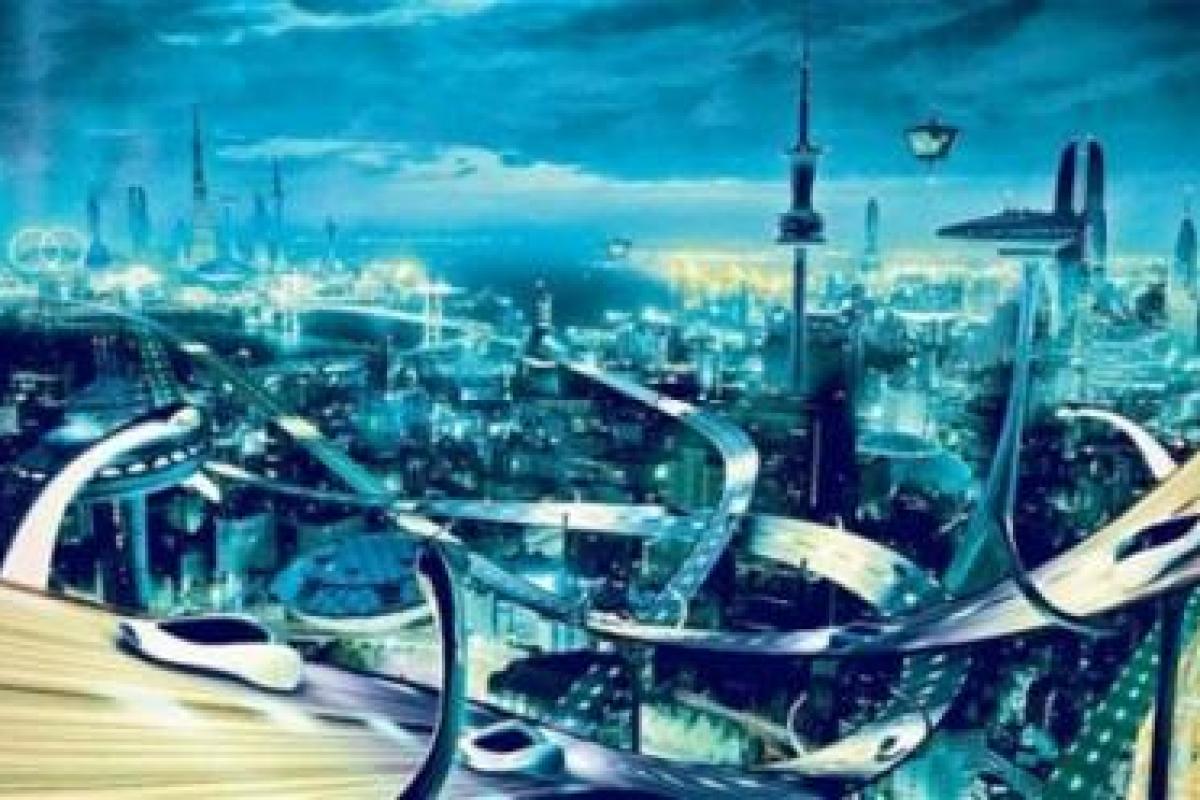Prospection, the act of looking forward in time, is a quintessentially human endeavour. In fact, some consider it the quintessential human endeavour.
Psychologist Dan Gilbert, author of 'Stumbling on Happiness' (and star of a recent Prudential campaign in the US) says: 'The human being is the only animal that thinks about the future.'
This is why we are able to evolve, culturally. We don’t just react to the immediate, we are always playing chess a few steps ahead, and we can learn from the accumulated wisdom of the past.
Technology changed everything
Digital technologies triggered an exponential explosion. Moore’s Law is the beat that drives changes, doubling what’s possible every 18 months, while the price halves. This is really, really weird.
No other technologies change this rapidly.
Cars do not get twice as fast and half as expensive every 18 months. In fact, cars haven’t changed very much at all in 50 or even 100 years, at their essence.
But information technologies do change exponentially.
Gauging the rate of cultural and commercial evolution, however, is another matter.
This is what causes ideas to come to market prematurely, like the Apple Newton, or most things in DotCom One. Designer Bill Buxton, principal scientist at Microsoft Research, calls this the ‘Long Nose of Innovation’.
Technologies that go on to have global scale, like the multi-touch computing that he worked on, take an average of 20 years to be refined enough, cheap enough, designed enough and understood enough, to become mass. There is a sense that the hype cycle is perhaps accelerating, as a function of decreased latency in the spread of ideas, but plateau of productivity still takes many years to summit.
One of the unforeseen effects of the exponential turn in the road was on our collective imagination.
The domain of speculative
Science fiction is the domain of the speculative, showing engineers possible futures to try and create. Google Earth and Second Life, were both created when engineers read Snow Crash by Neil Stephenson and tried to build ideas they saw on the pages.
But something happened just after the turn of the millennium.
Having rushed to create the future, and seeing it collapse, our conception of the future began to collapse as well.
To imagine the world of Minority Report, Stephen Spielberg assembled some of the great thinkers of the time and the result took hold on our vision of tomorrow. That, we all decided, is the future we are working towards, but boy is it far away. So let’s not worry about it.
And that, I suspect, is a problem.
Personalised billboards that know your name and purchase habits became retargeted banners stalking us around the web. Gesture-based computing gloves and 3D projections lead to Kinect and Leap Motion and wearable technologies.
(Doesn’t it look tiring, though? All that waving your arms around.)
HUDs became augmented reality and Google Glass. Science fiction seemed to grind itself into the present.
The latency of culture is a function of the speed of information. Culture can’t change until new information has propagated and this used to take a long time.
When letters took weeks to arrive, that defined the threshold of assumed response. Now, thanks to Twitter, the latency of culture has decreased to almost nothing, as everyone shares news as soon as it might be true. The news media feels it needs to move in step, so it makes mistakes, as we were shown during the Boston bombings. Speed is as important as content, evidenced in the Oreo SuperBowl blackout tweet that went around the world.
Science fiction of the near future, from visionaries like William Gibson, collapsed into alternative versions of now, as we try to decode the increasingly weird present. Kevin Kelly calls this the missing near future.
No-one is laying out plans for how we are to move forward, and so, as an industry, we recycle the oldest idea in advertising – branded content.
Mapping pathways
Futurology is not about prediction, it's about mapping possible pathways.
Without it, as Rushkoff suggests in Present Shock, planning gives way to ‘Apocalypto’, the hoping for an end of the ever decreasing circles of now, evinced by the endless, tiring, uses of the ‘death of’ narrative.
The death of the 30-second spot, of strategy, of traditional, of digital, or media.
All are, basically, saying 'We give up!'. We can’t find our way to the future and so, like all end-of-days nonsense, it means people give up on trying to find functional solutions for the problems and opportunities of the present.
Perhaps, then, we need to start thinking about the future again and start living up to the promises we made to ourselves and to the industry back when the web was born and manifestos were being made.
Marketing that was useful and beautiful, transparency of people and action that social media can deliver and distribute. Awesomeness created at the intersection of art, copy, Arduino and code, that can come about when we all learn to respect each other, department, silo, agency, client, and start working for the good of the industry and each other, as well as the bottom line.
The browser-based world wide web turned 20 this year. It’s finally ready.
Let’s start mapping out a future for our industry that doesn’t assume declining relevance and margins, but instead lets us help clients create value and make the world we live in, and the industry we work in, a nicer place.
Read more from Faris Yakob.
